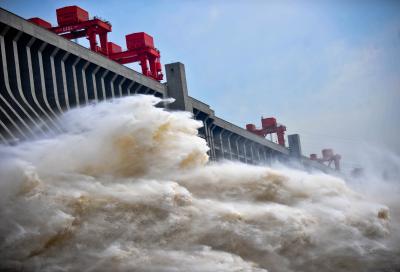China’s Yarlung Zangbo dam project reflects use of water as geopolitical leverage: Report
By IANS | Updated: August 7, 2025 20:55 IST2025-08-07T20:48:29+5:302025-08-07T20:55:02+5:30
Beijing, Aug 7 China’s decision to push the Yarlung Zangbo dam project in Tibet amid mounting concerns signals ...

China’s Yarlung Zangbo dam project reflects use of water as geopolitical leverage: Report
Beijing, Aug 7 China’s decision to push the Yarlung Zangbo dam project in Tibet amid mounting concerns signals a significant shift in South Asian water diplomacy, marked by a surge in confrontational tactics, a report cited on Thursday.
The move came shortly after India suspended the Indus Water Treaty with Pakistan following the April 22 terrorist attack in Jammu and Kashmir by the Pakistan-based militant outfit 'The Resistance Front' (TRF) — indicating that Beijing views water resources as an emerging tool of geopolitical influence, the report in 'Geopolitical Monitor' highlighted.
"The Yarlung Zangbo dam project represents a watershed moment in China’s emergence as a hydro-hegemon capable of manipulating water flows across multiple international boundaries for its own strategic advantage. While Beijing frames the initiative as part of its renewable energy transition and Tibet development plan, the project’s location, scale, and timing reveal concerning and calculated geopolitical motivations that extend well beyond energy security considerations alone," it said.
The report mentioned that China's construction drive in Tibet reflects a "systematic strategy" for resource exploitation and territorial consolidation, with the Yarlung Zangbo project being the latest example. Since 2000, it stated that Beijing has built or approved at least 193 hydroelectric installations in Tibet. Around 80 per cent are classified as major or massive-scale projects; over 60 per cent of these are in planning or early stages. However, the completion of these projects would displace more than 1.2 million residents and destroy countless sacred locations.
These development projects, the report said, have severe implications for Tibetan communities, with thousands being compulsorily resettled to enable the infrastructure developments and mining enterprises. Additionally, traditional grazing land has been submerged or compromised, leading to widespread destruction of livelihoods.
"The location of the dam reveals its geostrategic significance. Situated just 30 kilometres from China's contested frontier with India within the globe’s most profound and extensive canyon system, the facility sits at the confluence of multiple geopolitical fault lines. The Yarlung Zangbo bends around the Namcha Barwa mountain where it descends significantly in altitude over a 50-kilometre distance. This natural phenomenon creates optimal conditions for hydropower generation, but also provides China with an unprecedented chokehold over water flows to downstream nations," the report mentioned.
The Yarlung Zangbo dam, it stated, signifies more than just a development project or a diplomatic friction between China and India; it poses a deeper challenge to the “international order governing shared natural resources”.
Beijing’s persistence in moving ahead with the development project despite objections shows its disregard for international rules and agreements, it added. As global water scarcity worsens, China’s "hydro-hegemonic model seems to be laying the foundation for future conflict over humanity’s most essential resource", the Toronto-based Geopolitical Monitor noted.
Disclaimer: This post has been auto-published from an agency feed without any modifications to the text and has not been reviewed by an editor
Open in app